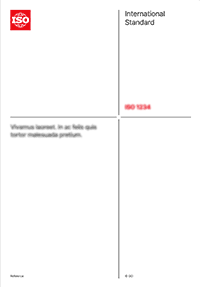Abstract
ISO/TS 18220:2016 specifies an early-life stage procedure for determination of the toxic effects of chemicals and water samples on a cold-water brackish water copepod species under semi-static conditions. The biological test variables include survival and development of the early-life stages. The exposure starts with newly hatched (<24 h) nauplii (larvae) and is continued until emergence of (c. 50 %) copepodites (juveniles) in the control.
The benthic living Nitocra complements the planktonic Acartia species in ISO 16778. These organisms represent different life-history strategies as Nitocra is egg-carrying, whereas Acartia is a broadcasting calanoid copepod and thus, different sensitivities of specific life stages. Nitocra is a fresh to brackish water species, which allows testing low salinity waters and is complementary to A. tonsa, which is of marine origin and poorly tolerates low salinities.
General information
-
Status: PublishedPublication date: 2016-07Stage: International Standard confirmed [90.93]
-
Edition: 1Number of pages: 20
-
Technical Committee :ISO/TC 147/SC 5ICS :13.060.70
- RSS updates

